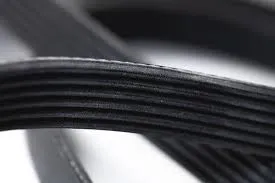- Arabic
- French
- Russian
- Spanish
- Portuguese
- Turkish
- Armenian
- English
- Albanian
- Amharic
- Azerbaijani
- Basque
- Belarusian
- Bengali
- Bosnian
- Bulgarian
- Catalan
- Cebuano
- Corsican
- Croatian
- Czech
- Danish
- Dutch
- Afrikaans
- Esperanto
- Estonian
- Finnish
- Frisian
- Galician
- Georgian
- German
- Greek
- Gujarati
- Haitian Creole
- hausa
- hawaiian
- Hebrew
- Hindi
- Miao
- Hungarian
- Icelandic
- igbo
- Indonesian
- irish
- Italian
- Japanese
- Javanese
- Kannada
- kazakh
- Khmer
- Rwandese
- Korean
- Kurdish
- Kyrgyz
- Lao
- Latin
- Latvian
- Lithuanian
- Luxembourgish
- Macedonian
- Malgashi
- Malay
- Malayalam
- Maltese
- Maori
- Marathi
- Mongolian
- Myanmar
- Nepali
- Norwegian
- Norwegian
- Occitan
- Pashto
- Persian
- Polish
- Punjabi
- Romanian
- Samoan
- Scottish Gaelic
- Serbian
- Sesotho
- Shona
- Sindhi
- Sinhala
- Slovak
- Slovenian
- Somali
- Sundanese
- Swahili
- Swedish
- Tagalog
- Tajik
- Tamil
- Tatar
- Telugu
- Thai
- Turkmen
- Ukrainian
- Urdu
- Uighur
- Uzbek
- Vietnamese
- Welsh
- Bantu
- Yiddish
- Yoruba
- Zulu
снеж . 16, 2024 03:47 Back to list
flat rubber drive belts
Understanding Flat Rubber Drive Belts An Essential Component in Mechanical Systems
Flat rubber drive belts are integral components widely used in various mechanical systems and machinery. Their primary function is to transfer power between different parts, enabling efficient operation across numerous applications. This article delves into the characteristics, applications, benefits, and maintenance of flat rubber drive belts, emphasizing their importance in modern engineering and manufacturing.
Characteristics of Flat Rubber Drive Belts
Flat rubber drive belts are typically made from durable rubber compounds, which provide flexibility and strength. Their flat design allows for a larger contact surface with pulleys or drums, enhancing grip and reducing slippage. These belts come in various thicknesses and widths, making them suitable for a range of applications. The unique composition of the rubber also ensures resistance to wear, oil, and temperature changes, contributing to the longevity of the belt.
The effective operation of flat rubber drive belts is largely determined by their tension and alignment. Proper tension ensures that the belt does not slip during operation, while accurate alignment between the associated pulleys prevents undue wear and potential failure. Manufacturers often provide guidelines for optimal tension and alignment, which should be meticulously followed during installation.
Applications of Flat Rubber Drive Belts
Flat rubber drive belts find extensive use in numerous industries, including agriculture, manufacturing, and automotive. In agricultural equipment, these belts are commonplace in tractors and harvesters, where they help in driving different components like alternators and water pumps. In manufacturing, flat rubber belts are integral to conveyor systems, enabling the efficient movement of goods and materials along production lines.
The automotive industry also employs flat rubber belts in various applications. For example, some car engines use flat belts for powering auxiliary components, such as air conditioning compressors and power steering pumps. Their ability to transmit power smoothly and quietly is highly valued in such settings, where noise reduction is crucial for user comfort.
Moreover, flat rubber drive belts are essential in home appliances like washing machines and vacuum cleaners
. They ensure that the motor's power is effectively transferred to the operational parts, thereby playing a significant role in the overall functionality of these appliances.flat rubber drive belts

Benefits of Flat Rubber Drive Belts
One of the primary benefits of flat rubber drive belts is their efficiency in power transmission. Compared to traditional round belts, flat belts offer a larger contact area, resulting in enhanced grip and reduced chances of slippage. This efficiency translates into lower energy consumption, making them an environmentally friendly choice.
Another advantage is their relatively low cost. Flat rubber drive belts are often more affordable than their counterparts, which helps in reducing overall machinery costs without compromising performance. Additionally, their ease of installation and replacement contributes further to cost savings, as maintenance is simplified.
The versatility of flat rubber drive belts is also noteworthy. They can be used in various configurations and are compatible with multiple pulley systems, making them suitable for various mechanical setups.
Maintenance and Care of Flat Rubber Drive Belts
To ensure the longevity and optimal performance of flat rubber drive belts, regular maintenance is key. This includes routine inspections for signs of wear, such as cracks, frays, or glazing, which could indicate that the belt is nearing the end of its useful life. Monitoring tension and realigning any misaligned components can also prevent premature failure.
Proper cleaning of the belt and pulleys helps maintain grip and prevents the build-up of debris or oil, which can lead to slippage. If any damage is detected, timely replacement of the belt is crucial to avoid disruptions in operation.
Conclusion
Flat rubber drive belts are indispensable in modern mechanical systems, contributing significantly to power transmission across a diverse range of applications. Their durability, efficiency, and cost-effectiveness make them a go-to choice for many industries. Understanding the functions, benefits, and maintenance of these belts ensures that machinery operates smoothly and reliably, ultimately enhancing productivity and performance in various mechanical systems. As technology continues to evolve, the flat rubber drive belt remains a steadfast component in ensuring efficiency and reliability across myriad applications.
-
Korean Auto Parts Timing Belt 24312-37500 For Hyundai/Kia
NewsMar.07,2025
-
7PK2300 90916-T2024 RIBBED BELT POLY V BELT PK BELT
NewsMar.07,2025
-
Chinese Auto Belt Factory 310-2M-22 For BMW/Mercedes-Benz
NewsMar.07,2025
-
Chinese Auto Belt Factory 310-2M-22 For BMW/Mercedes-Benz
NewsMar.07,2025
-
90916-02660 PK Belt 6PK1680 For Toyota
NewsMar.07,2025
-
drive belt serpentine belt
NewsMar.07,2025

